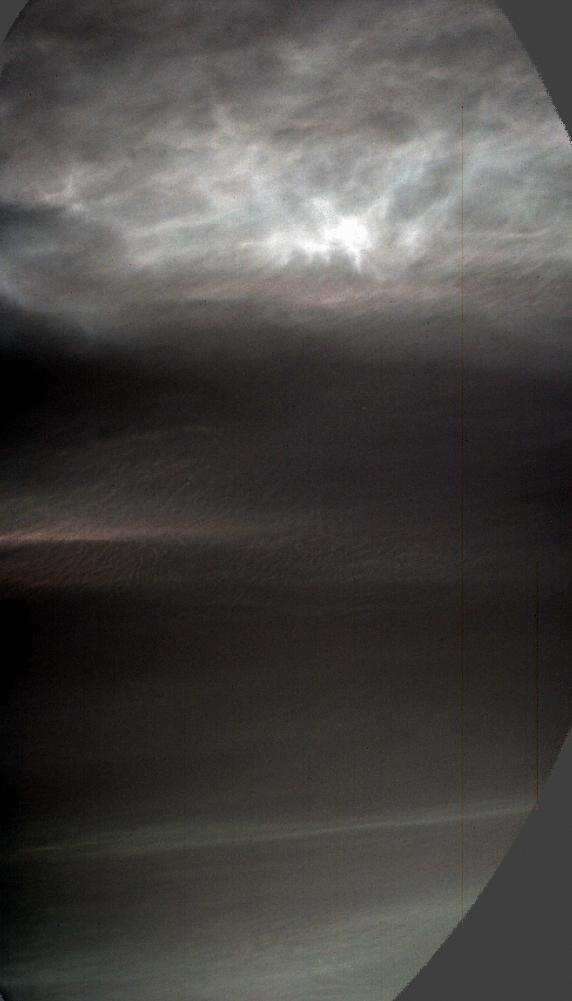News
Silver clouds spotted over Mars: what is this rare atmospheric phenomenon
NASA's Curiosity rover has captured images of red and green clouds drifting across the Martian sky. The images, taken over 16 minutes on January 17, show the latest observations of what are called silvery or twilight clouds, colored by scattered light from the setting Sun.
While Martian clouds may look similar to clouds on Earth, they contain frozen carbon dioxide or dry ice. Sometimes they even produce a rainbow of colors, forming iridescent or "pearlescent" clouds. Too faint to be seen in daylight, they are only visible when the clouds are particularly high and it is evening, NASA writes.
The iridescent hues that can be seen at the top of the new images are at an altitude of about 60 to 80 kilometers. They are also visible as white plumes falling through the atmosphere, flying 50 kilometers above the surface before evaporating due to rising temperatures. At the bottom of the images, water and ice clouds briefly appear, moving in the opposite direction at about 50 kilometers above the rover.
Twilight clouds were first observed on Mars by NASA's Pathfinder mission in 1997. This rare atmospheric phenomenon has not yet been studied – there are no records of their observation before 1885. In April 2007, NASA launched the AIM satellite, which studies silver clouds from orbit.
The new images were taken by NASA's Curiosity rover, which used its left mast camera (Mastcam) to capture them. The color filter wheel on the left mast camera is stuck, making part of the image appear cropped in three corners. The original recording made by Curiosity lasted 16 minutes, and the published video was sped up about 480 times.
This is the fourth year that Curiosity has observed twilight clouds on Mars. Previous images were taken in 2019, 2021, and 2023.
"I'll always remember the first time I saw these rainbow clouds and at first I was sure it was some kind of colored artifact. Now it's become so predictable that we can plan our images – the clouds appear at the same time of year," said Mark Lemmon, an atmospheric researcher at the Boulder Institute for Space Sciences.
Each observation of silver clouds is an opportunity to learn more about the particle size and growth rate of Martian clouds, which, in turn, provides more information about the planet's atmosphere.
Only verified information is available on our Telegram channel OBOZ.UA and Viber. Do not fall for fakes!




























